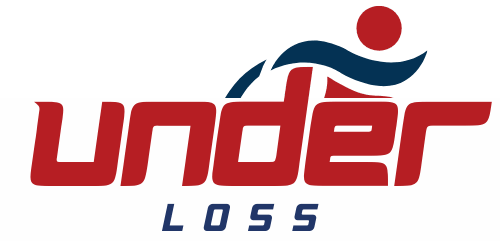In today’s fast-paced business environment, that is fast-paced, excellent customer service is what can make you stand out from the other businesses. With customers demanding immediate responses and smooth interaction, having the best tools in place is vital. Software for customer service is a revolution for businesses looking to improve their support processes.
Imagine being able to respond to queries in just a few seconds or track issues seamlessly across different platforms. The ideal software not just improves your workflow, but also improves the overall experience for customers. How do you select the best solution from an array of alternatives? This guide will take you through the essential information you should learn about choosing the right software for customer service that meets your requirements. Let’s explore this vital aspect of modern-day business!
Table of Contents
What is Customer Service Software?
Software for customer service is a tool that was designed to assist businesses in managing and improving their interactions with their customers. It improves communication and allows support teams to handle questions quickly.
The software includes a variety of functions like ticket systems, chat features, and knowledge bases. These features give customers easy access to information while making it possible for agents to monitor problems seamlessly. With the help of software for customer service, businesses can speed up responses and improve overall satisfaction. The objective isn’t just resolution, but building long-lasting relations with customers. As technology advances and capabilities expand, so do the features of such tools. These tools now usually include automated processes and AI-driven insight that allow for better decision-making by support teams.
Types of Customer Service Software
Software for Customer Service comes in many types, each specifically designed to meet the needs of the customer.
Live Chat Software
The Live Chat software can be an effective instrument for improving customer interactions. It lets businesses interact with customers in real time, answering any concerns or questions that arise.
Customers who receive instant communications are impressed by the speed of response. This increases trust and satisfaction, which leads to greater loyalty. Live chat integration can drastically reduce the time to respond. Instead of putting on hold or sorting through emails, users can get instant assistance. This ease of use often leads to higher conversion rates. Live chat software can transform the way businesses interact with their clients and streamline the support process.
Help Desk Software
Help desk software forms the core of effective customer service processes. It simplifies the management of tickets and makes sure that every question is unanswered.
With features like automated replies, it is possible to prioritize tickets according to urgency. This allows teams to respond swiftly to issues that are critical while focusing on lesser pressing issues. A solid help desk system also offers a central knowledge base. Customers can seek solutions on their own and reduce the number of requests. This is not just empowering users, but also frees agents to handle more complicated problems. The tools for reporting within these systems give insight into the performance of teams and customer satisfaction levels. Companies can spot patterns and adapt strategies to them, which leads to continual improvement in the quality of service.
Social Media Monitoring Tools
Social media monitoring tools are vital for companies looking to remain connected to their customers. These tools let you keep track of your brand’s mentions, customer feedback, and industry trends on multiple platforms.
With real-time data, companies are able to respond quickly to complaints or questions. This proactive approach helps to create a strong community around your company’s image. Choosing the most appropriate tools to monitor social networks requires choosing one that is in line with your company’s goals and offers simple features. As the nature of interactions changes, so do the methods we interact online. These tools are essential to navigate the landscape efficiently.
Call Center Solutions
The use of call center services is essential in businesses that want to enhance their customer service. They facilitate the communication between customers and agents to ensure queries are addressed effectively.
With features such as automatic call distribution, companies can direct calls according to the knowledge of the person. This does not just improve responses but also improves customer satisfaction. Integrating with different platforms provides a major advantage. Through the integration of CRM systems and chat software, businesses can create an efficient flow of data that allows agents to provide individualized service.
Factors to Consider When Choosing Customer Service Software;
When selecting software for customer service, the budget is an important factor to consider. Different pricing models are available, including subscription-based and one-time purchases. Be aware of your budgetary limitations before deciding on options.
Budget and Pricing Models
When it comes to selecting a customer service software, budget is an important element. There are a variety of pricing options that are suitable for various dimensions and needs of businesses.
Subscription-based plans are very popular. They provide predictable monthly prices with regular updates. This type of model is ideal for small businesses looking to control cash flow efficiently. However, the one-time purchase licenses could be appealing to larger businesses. They typically have greater upfront costs, but there are no ongoing charges. Check whether the savings over time outweigh the initial investment.
Features and Functionality
When choosing a customer service software, the functions and features are essential. They determine how efficiently your team will be able to help customers.
Find tools that provide ticket management software to simplify queries. A well-equipped knowledge base feature allows the customer and agent to find solutions quickly. Automated solutions improve efficiency by handling repetitive tasks, freeing employees to focus on more difficult questions. Look into solutions that support multi-channels to allow you to interact with your customers via various channels – email or chat, as well as social media, and so on. The options for customization allow you to adapt the software to the specific needs of your business. This allows it to expand with your business while remaining relevant in a constantly changing market.
Integration Capabilities
When it comes to selecting software for customer service, Integration capabilities are vital. Integration with the existing software can increase effectiveness.
Take note of how the software is compatible with your existing system. It doesn’t matter if it’s CRM systems or email marketing services, or e-commerce products; it is essential to be compatible. Find options that provide simple API access or built-in integrations. Additionally, consider the flow of data between systems. The smooth integration of data ensures that data flows seamlessly across platforms, which reduces the need for manual input and reduces errors. Don’t forget to provide support for your users for connecting processes. A well-written and efficient documentation as well as a flexible help team,s will make the process easier and less stressful for your staff.
Scalability and Customization Options
Scalability is a crucial aspect when choosing customer service software. As your company grows and your needs for customer service will change. The ideal software should be able to adjust to increased workloads without impacting performance.
The customization options provide an additional degree of flexibility. Your business has its own requirements and processes that the standard solutions aren’t able to fully meet. Choose platforms that allow users to customize the features, user interfaces, and workflows by your particular goals. A flexible and scalable system improves the users’ experience. Employees are able to perform more efficiently if they are able to use the system in conjunction with their everyday tasks and duties.
User-Friendliness and Training Requirements
The user-friendliness factor is essential when choosing software to help customers. In the event that your interface becomes difficult to navigate, your team may find it difficult to learn and use it efficiently.
Find designs that are intuitive and enable agents to use the system quickly. Simple layouts with easy-to-read icons could make all the improvements in everyday operations. Training requirements are a major factor. Certain software packages have extensive guides or tutorials, and others provide interactive training sessions. Take note of the amount of time your employees will be able to devote to learning new software tools.
A platform that requires only minimal training can get you running more quickly. It helps save money and ensures that your employees are focused on providing exceptional customer experiences, without being distracted.
Conclusion:
The right software for customer service could be a major improvement in your company’s operations. It simplifies processes, improves communications, and ultimately increases customer satisfaction. Each kind of software serves specific functions; knowing these distinctions can help you decide which one best fits your goals for business.
Take note of budget limitations, important features, the most essential functions, the ability to integrate, and options for scaling. The best solution must not just meet your current requirements but also be able to adapt to your company’s growth. It is also important to take into consideration. If employees have difficulty using the tool because of its difficulty or lack of resources, their productivity could suffer.




